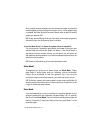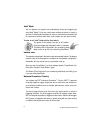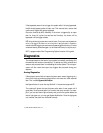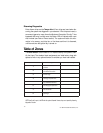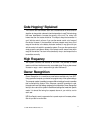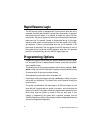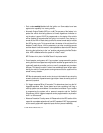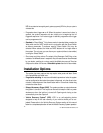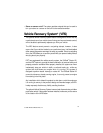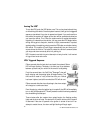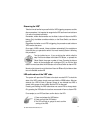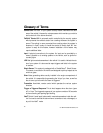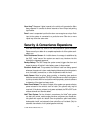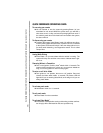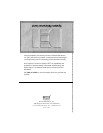
18
© 1997 Directed Electronics, Inc.
Glossary of Terms
Control Unit The “brain” of your system. Usually hidden underneath the dash
area of the vehicle. It houses the microprocessor which monitors your vehicle
and controls all of the alarms functions.
FailSafe
®
Starter Kill An automatic switch controlled by the security system
which prevents the vehicle’s starter from cranking whenever the system is
armed. The vehicle is never prevented from cranking when the system is
disarmed, in Valet
®
mode, or should the starter kill switch itself fail. Your
system is ready for this feature, however installation of this feature may
require additional labor.
Input A physical connection to the system. An input can be provided by a
sensor, pinswitch or to existing systems in the vehicle, such as ignition or
courtesy lights.
LED Red light mounted somewhere in the vehicle. It is used to indicate the sta-
tus of your system. It is also used to report triggers and faults in the system
or sensors.
Shock Sensor This system is packaged with a DoubleGuard
®
Shock Sensor.
This sensor is mounted in the vehicle and designed to pick up impacts to the
vehicle or glass.
Siren Noise generating device usually installed in the engine compartment of
the vehicle. It is responsible for generating the “chirps” you hear, as well as
the six tones you hear while the alarm is triggered.
Transmitter Hand-held, remote control which operates the various system
functions
Trigger or Triggered Sequence This is what happens when the alarm “goes
off” or “trips.” The triggered response of your system consists of 30 seconds
of siren sounding and parking light flashing.
Valet
®
Switch A small push button switch mounted somewhere inside the vehi-
cle. It is used to override the alarm when a transmitter is lost or damaged, or
to put it into Valet
®
mode.



